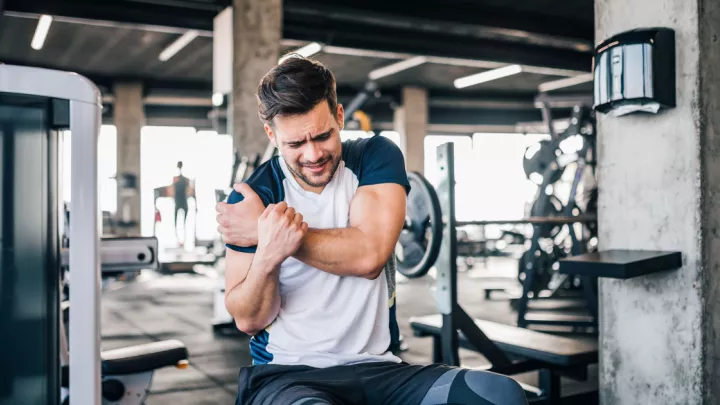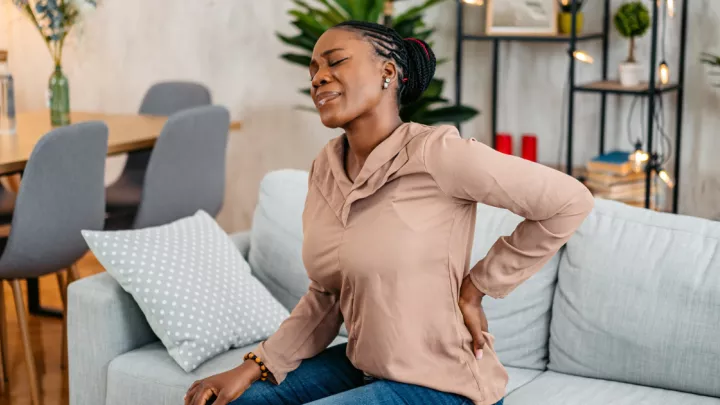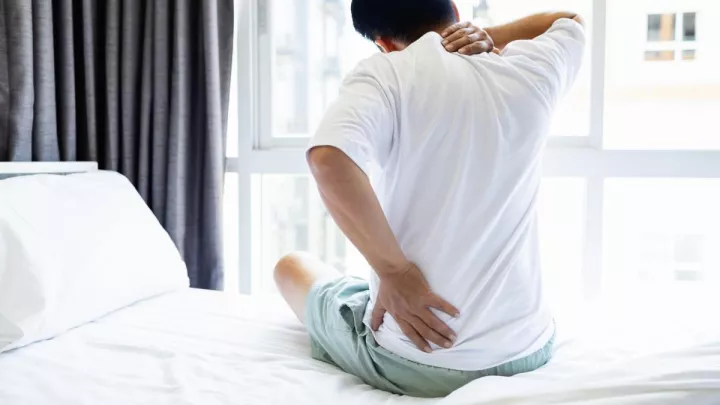What is a Dowager's hump, and how can I prevent it?

Your body changes as you age; one of the many reasons getting older isn’t for the faint of heart. One of the potential changes you may notice as you age is the development of a curve or hump in your upper spine. This hump – a Dowager’s hump – is a common issue for older people but is nevertheless quite treatable.
What is a Dowager’s hump?
A Dowager’s hump is a hump at the base of the neck typically related to kyphosis – an excessive spinal curve – or some forward bending of the spine. “Classically, a Dowager’s hump is associated with older women, but we can see it in anybody,” says orthopedic surgeon Scott Vincent, MD.
Experts estimate that Dowager’s hump affects 2 out of 5 people over 55. Because osteoporosis is more common in women, so is Dowager’s hump.
But it’s not just age that contributes to forming a Dowager’s hump. “A Dowager’s hump is something we frequently see secondary to postural issues, particularly in people who look down at their phone or computer screen frequently,” says Dr. Vincent.
Primary causes of Dowager’s hump?
According to Dr. Vincent, there are two primary causes of a Dowager’s hump:
- Postural causes – Developed by leaning down and looking at a phone or computer. How you’re seated at work and other actions you do frequently also contribute to postural causes of a Dowager’s hump
- Osteoporosis – Typically occurs in older patients. These patients can develop kyphosis or forward bending of the upper part of the spine, leading to a stooped posture. Also called a kyphotic deformity, a Dowager’s hump through osteoporosis happens more slowly over time as changes in the spine related to osteoporosis progress
Common symptoms of Dowager’s hump?
Some of the most common symptoms of Dowager’s hump include:
- Noticing your head is in a forward-leaning position
- Seeing a physical hump at the top of your back through the base of your neck
- Pain in your neck and upper back, particularly with certain motions and movements
- If your Dowager’s hump is related to kyphosis and osteoporosis, or if you’ve ever had a fracture, you may also experience pain and stiffness in the affected area
- Pain and stiffness in the neck and shoulder blade area
- In severe cases, you may experience difficulty looking up
Treating Dowager’s hump
“The most important treatment for Dowager’s hump – particularly when it’s a postural cause – is postural retraining through muscle stretching and strengthening of the muscles in the upper part of your neck and back,” says Dr. Vincent.
“Generally, when I see patients with a Dowager’s hump, and it’s a postural issue, the mainstay of treatment is working with a physical therapist to learn some of the appropriate exercises to correct the postural imbalances and misalignment.”
“Typically, we will have you work with a physical therapist for six to eight weeks and then continue the stretches and strengthening activities you learn on your own,” says Dr. Vincent. Because a Dowager’s hump takes significant time to develop, it will likely take an extended time to improve. You must retrain your muscles and posture, which may take several months to strengthen but should steadily over time if you stick to these exercises.
Some of these physiotherapeutic treatments are important when your Dowager’s hump is more related to an osteoporotic issue or kyphosis that can develop from osteoporosis. Still, there’s an extra layer of treatment too.
“If you have a Dowager’s hump resulting from osteoporosis, your health care provider must first identify and treat the cause of the osteoporosis,” says Dr. Vincent. “Treating these causes is necessary to then treat your Dowager’s hump.”
In severe and extreme cases, you can surgically correct a Dowager’s hump, such as if a deformity to your spine is causing the problem, particularly if you’re having a lot of difficulty holding your head upright. Still, most providers rarely use these surgical treatments.
“If your kyphosis gets severe enough, there are surgical operations we can do, but we seldom employ them, and they are infrequent in terms of us needing to utilize them,” says Dr. Vincent.
Preventing Dowager’s hump
For postural causes, it’s essential to focus on good ergonomics to prevent a Dowager’s hump. “Focus on your posture and how you sit, especially if you sit for prolonged periods while at work,” says Dr. Vincent.
“Practice proper posture, sitting in an appropriate position, and having your screen eye level so you’re not spending much time looking down. Doing postural exercises to keep your spine and core strong will also help prevent Dowager’s hump.”
For osteoporotic causes, it’s vital to consider your bone health. “Historically, we think about a Dowager’s hump being a problem of elderly women, when in fact, we know it’s a potential problem for all of us,” says Dr. Vincent.
So, ensure you’re eating a balanced diet, consuming plenty of vitamin D, and getting regular exercise – including strength training – to help prevent osteoporosis as you age.
“Many people assume that if you develop a Dowager’s hump, there’s nothing you can do about it, and it’s something that won’t improve, and you’ll just have to live with it,” says Dr. Vincent. “However, this is certainly not true, particularly if it’s a postural problem.”
“We can use several exercises and other modalities to help treat a Dowager’s hump over time and improve people’s pain and function.”







